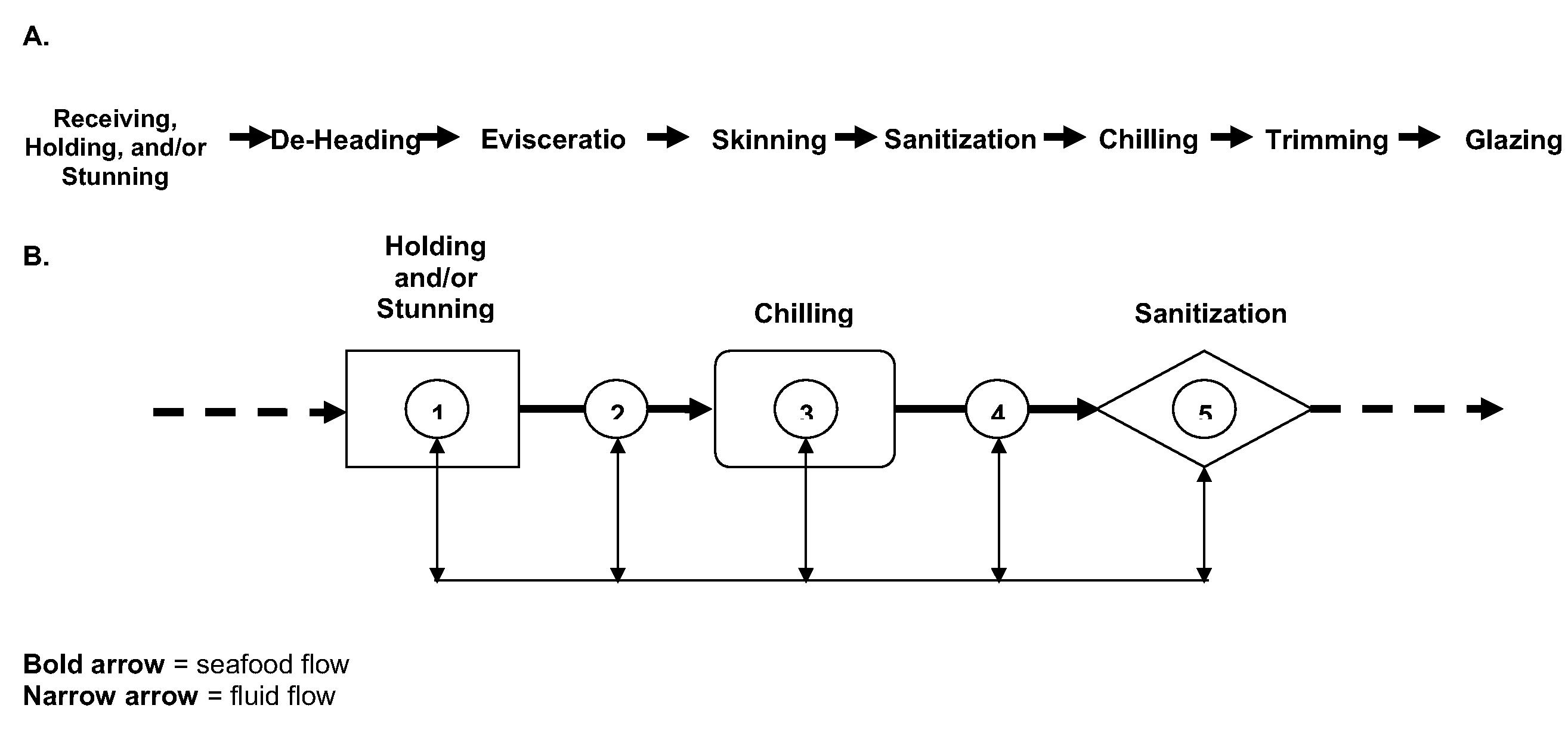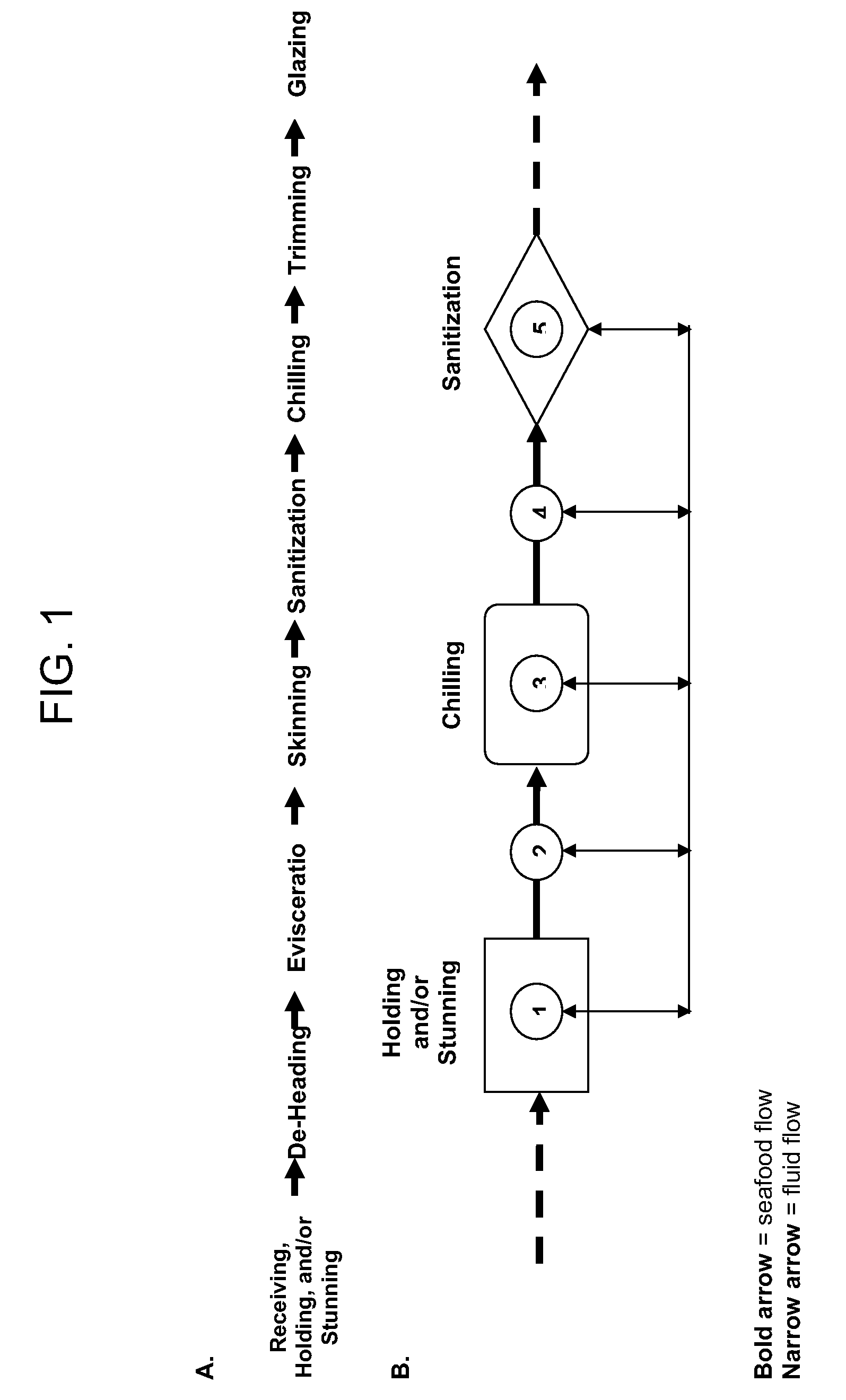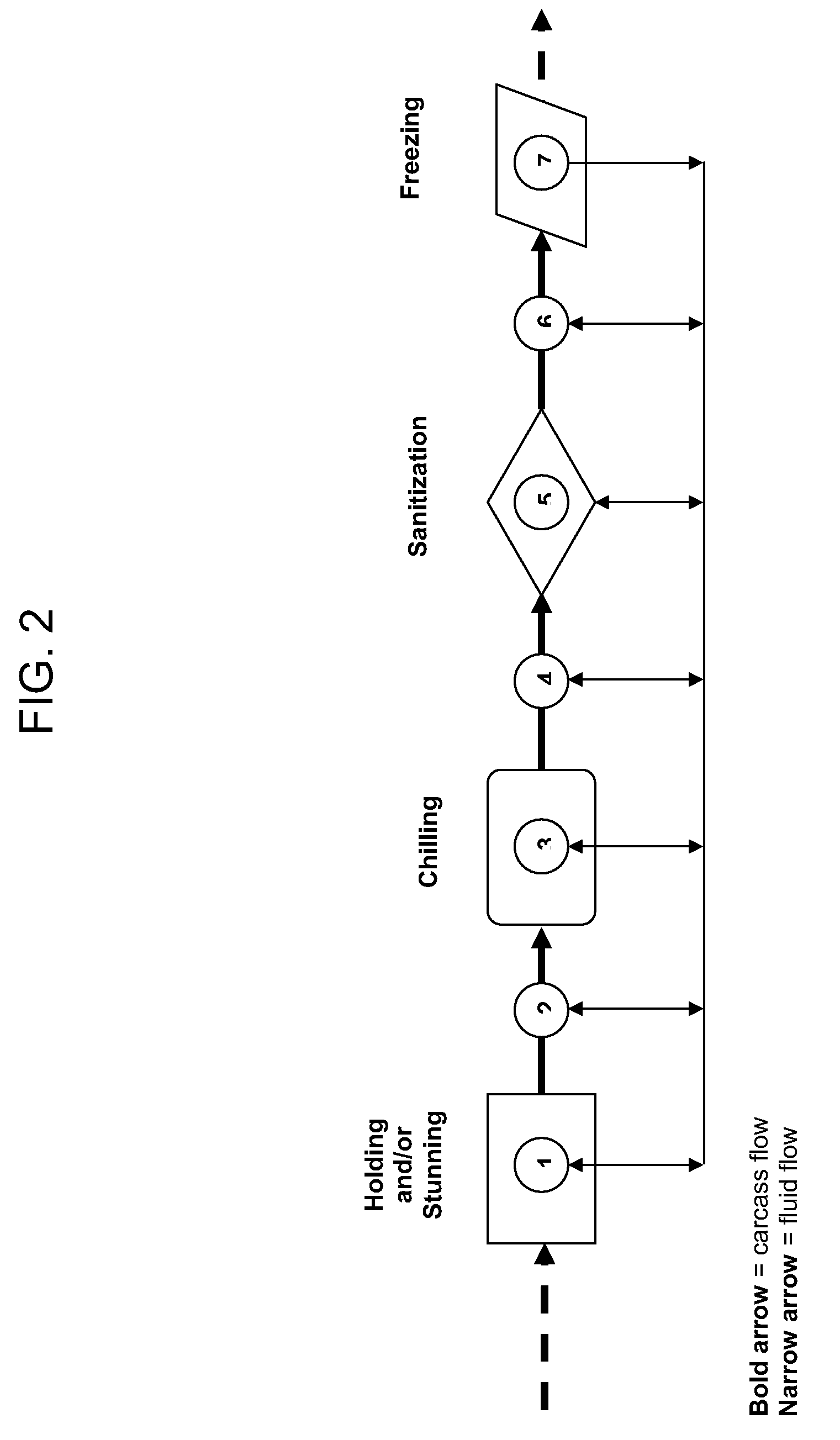Methods for reducing microbial contamination in seafood processing
a technology for reducing microbial contamination and seafood, which is applied in the direction of meat/fish preservation by freezing/cooling, milk preservation, food preparation, etc., can solve the problems of marked texture and flavor of seafood, rapid spoilage of seafood, and unsatisfactory consumption of seafood, so as to reduce the pathogen load of seafood processing and prolong the shelf life of seafood
- Summary
- Abstract
- Description
- Claims
- Application Information
AI Technical Summary
Benefits of technology
Problems solved by technology
Method used
Image
Examples
example 1
Disinfection Composition Dip for Catfish
[0125]The effect of an acidic buffered copper containing disinfection composition was examined on shelf life, pathogen load, and odor for catfish fillets. The disinfection agent was commercially available Tasker Pacific Blue (including sulfuric acid, ammonium sulfate, copper sulfate, and water).
[0126]Treatment solution was prepared by filling a container with 2.0 liters of tap water, recording the initial pH, adding 0.13 ml of Tasker Pacific Blue concentrate (to provide mixture with target free copper concentration of 3 ppm), and manually mixing with a non-metal stir bar. After mixing, the resulting solution was measured for pH. Then, approximately 3.4 mL of Tasker Clear™ was titrated into the, allowing adequate time for mixing and equilibration, until a target pH of 2.0 was reached. The total amount of Tasker Clear™ is dependent upon the initial pH of the water.
[0127]Catfish fillets were secured from a catfish processor and dipped in the abov...
example 2
Disinfection Composition Dip for Catfish at a Commercial Processing Facility
[0130]The effect of an acidic buffered copper containing disinfection composition was examined on shelf life for catfish fillets at a large commercial catfish processing plant. The disinfection agent was commercially available Tasker Pacific Blue (including sulfuric acid, ammonium sulfate, copper sulfate, and water).
[0131]Catfish fillets were dipped in pH 2.3 and pH 3.0 solutions of Tasker Blue (3.0 ppm copper) at the rate of 0.88 lb fish per gallon of solution. The fillets were sampled after contact for up to 15 min. The experiment was then repeated with a second set of catfish fillets in the same solution. The pH was monitored after each dip group. The first set of fish in pH 2.3 was weighed, dipped, stirred several times, and drained. The second set of pre-chilled fillets were dipped in the same previous Tasker Blue solution and processed the same way as the first set. After the second set, pH of solution...
example 3
Disinfection Composition Dip for Salmon Fillets
[0137]The benefits of application of an acidic buffered copper containing disinfection composition in a dip application was evaluated as a means of reducing microbes and spoilage bacteria to extend shelf life of fresh salmon fillets. The disinfection agent was commercially available Tasker Pacific Blue (including sulfuric acid, ammonium sulfate, copper sulfate, and water).
[0138]Testing was performed at a commercial seafood processing plant. Seafood products tested were salmon fillets. Salmon fillets were weighed before and after treatment to determine absorption and consumption rates (see e.g., Table 3). Salmon fillets were dipped in the Tasker Pacific Blue Seafood Wash using a lugger tote (empty weight, 5.25 lbs, weight with Tasker Blue, 38.50 lbs). The pH levels of the solution were monitored with a hand held pH monitor between each filet treated. Each filet was randomly selected from a holding container. Salmon fillets were weighed a...
PUM
| Property | Measurement | Unit |
|---|---|---|
| pH | aaaaa | aaaaa |
| pH | aaaaa | aaaaa |
| pH | aaaaa | aaaaa |
Abstract
Description
Claims
Application Information
 Login to View More
Login to View More - R&D
- Intellectual Property
- Life Sciences
- Materials
- Tech Scout
- Unparalleled Data Quality
- Higher Quality Content
- 60% Fewer Hallucinations
Browse by: Latest US Patents, China's latest patents, Technical Efficacy Thesaurus, Application Domain, Technology Topic, Popular Technical Reports.
© 2025 PatSnap. All rights reserved.Legal|Privacy policy|Modern Slavery Act Transparency Statement|Sitemap|About US| Contact US: help@patsnap.com



